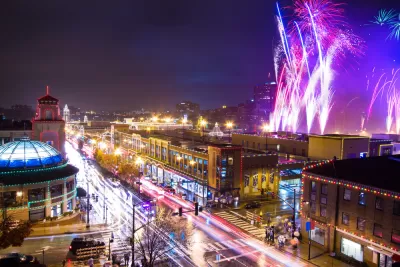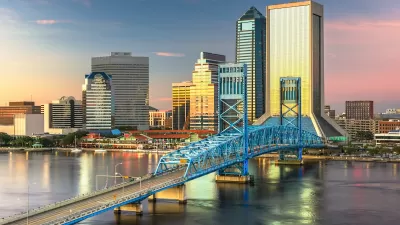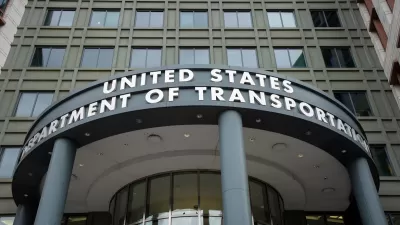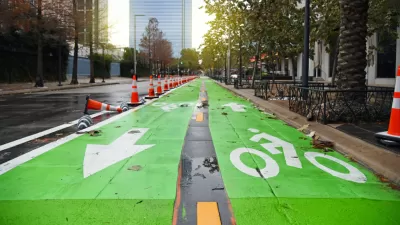The city has taken some steps to address gaps in pedestrian infrastructure, but fatalities are growing as the most disadvantaged communities continue to lack safe walking conditions.

Reporting for KCUR, Savannah Hawley raises questions about pedestrian safety in Kansas City, where cars have killed 44 pedestrians so far this year, up from 33 at the same time last year. “Of the 1,485 crash fatalities in the Kansas City metro over the last five years, pedestrians made up 13% — or more than 190 deaths — despite only accounting for about 6% of travelers,” Hawley writes. “Kansas City council member Melissa Robinson said that conditions for pedestrians are especially dire in northeast Kansas City, where last week's accident took place.”
Part of the problem stems from the way the city, until recently, responded to sidewalk maintenance requests. After a long waiting period, local property owners were tasked with paying for repairs, which often left poorer neighborhoods unable to make needed repairs. The city has made efforts to ensure more equitable distribution of city resources for repairing sidewalks and roads, such as a 2017 property tax increase to fund infrastructure repairs. “While improvements have been made, Robinson is firm that every change needs to be made with an eye on equity. People in poorer areas who have no choice but to walk and use public transit need these changes the most.”
The article also addresses the tension between bike lanes and sidewalks, which are sometimes pitted against each other. According to Michael Kelley, policy director at BikeWalkKC, “The bigger question is why are we repaving the street for the third time while the sidewalk is busted, and not including safer infrastructure that we know could make it safer for everyone?”
FULL STORY: Another person in Kansas City was killed by a car. What is the city doing about pedestrian safety?

Americans May Be Stuck — But Why?
Americans are moving a lot less than they once did, and that is a problem. While Yoni Applebaum, in his highly-publicized article Stuck, gets the reasons badly wrong, it's still important to ask: why are we moving so much less than before?

Using Old Oil and Gas Wells for Green Energy Storage
Penn State researchers have found that repurposing abandoned oil and gas wells for geothermal-assisted compressed-air energy storage can boost efficiency, reduce environmental risks, and support clean energy and job transitions.

Placekeeping: Setting a New Precedent for City Planners
How a preservation-based approach to redevelopment and urban design can prevent displacement and honor legacy communities.

San Francisco’s Muni Ridership Grew in 2024
The system saw its highest ridership since before the Covid-19 pandemic, but faces a severe budget shortage in the coming year.

Colorado Lawmakers Move to Protect BRT Funding
In the face of potential federal funding cuts, CDOT leaders reasserted their commitment to planned bus rapid transit projects.

Safe Streets Funding in Jeopardy
The Trump administration is specifically targeting bike infrastructure and other road safety projects in its funding cuts.
Urban Design for Planners 1: Software Tools
This six-course series explores essential urban design concepts using open source software and equips planners with the tools they need to participate fully in the urban design process.
Planning for Universal Design
Learn the tools for implementing Universal Design in planning regulations.
Heyer Gruel & Associates PA
City of Moreno Valley
Institute for Housing and Urban Development Studies (IHS)
City of Grandview
Harvard GSD Executive Education
Salt Lake City
NYU Wagner Graduate School of Public Service
City of Cambridge, Maryland





























